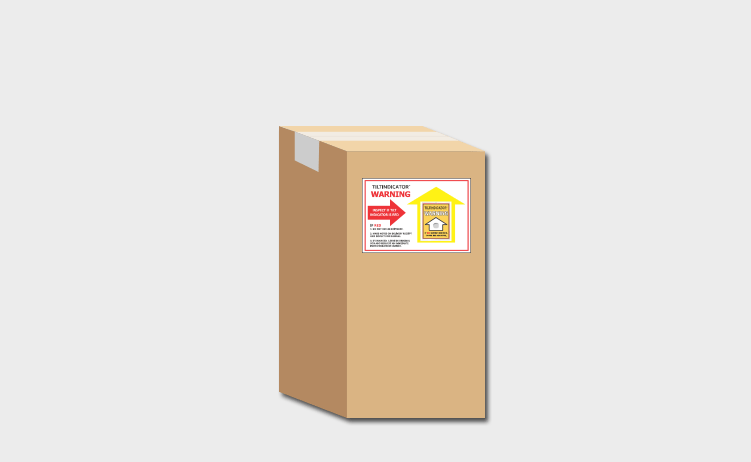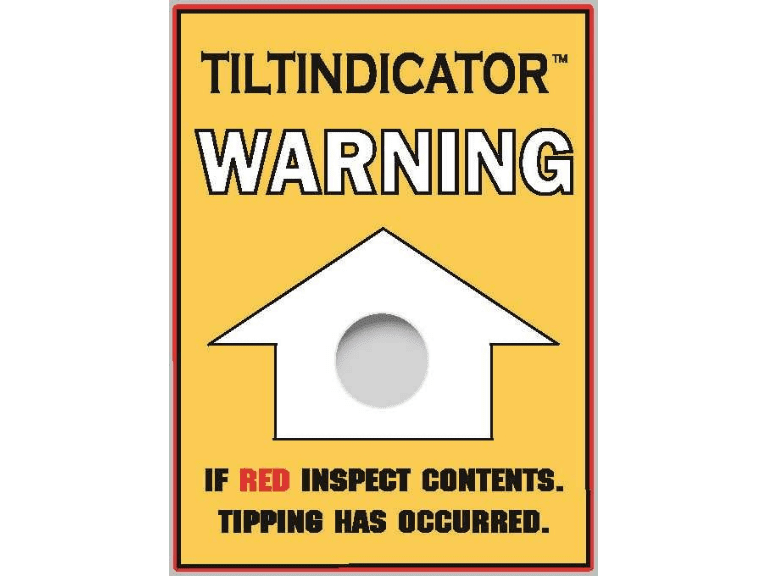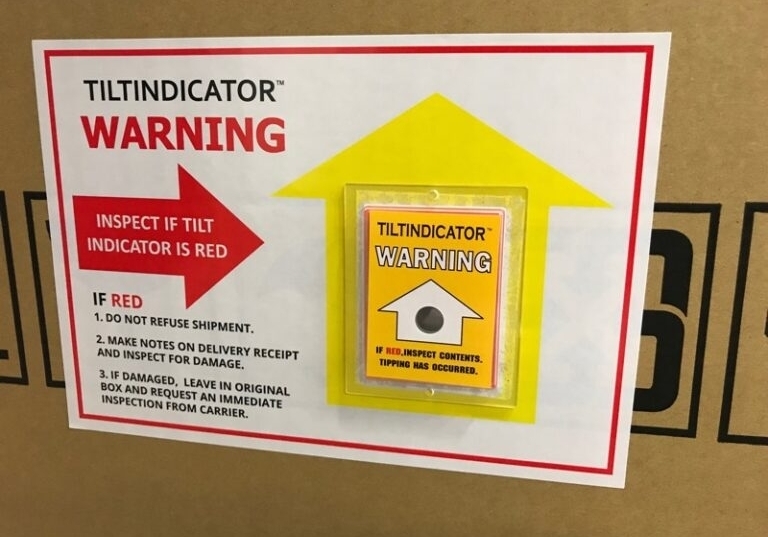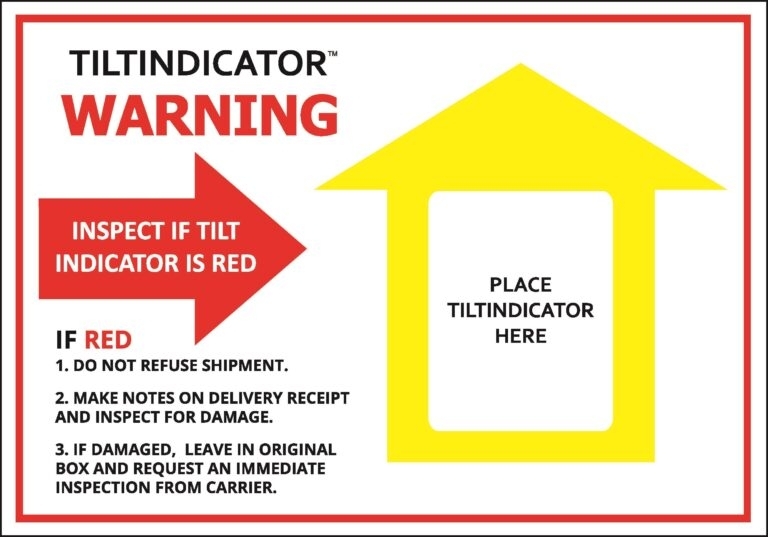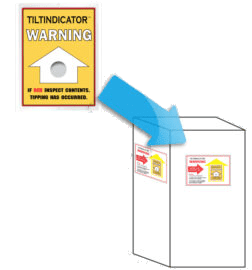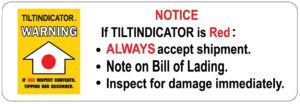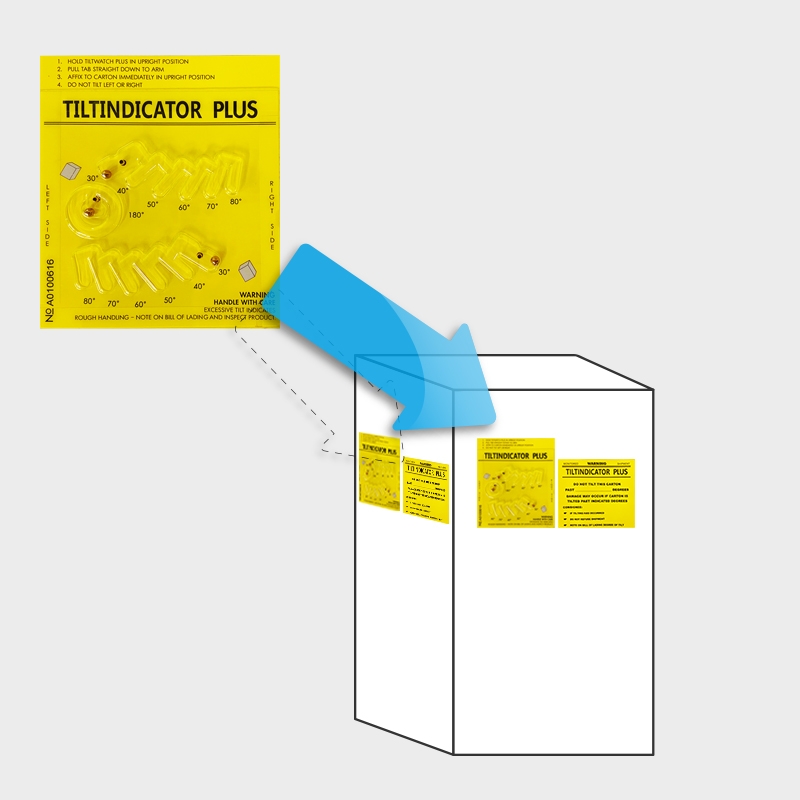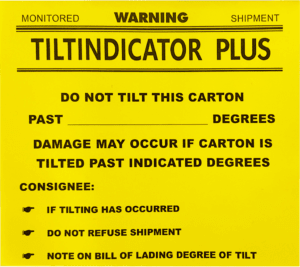Inclination sensors and indicators: How to ensure proper handling
Tilt sensors and indicators help to monitor the proper transportation and handling of goods such as liquids, batteries, flowers, electronics and machinery. This is because tipping can damage goods (and even cause them to be completely defective).
How does it work?
A tilt indicator works by giving a visible sign when an item has tipped on its side or completely overturned. For example, our tilt indicator lights up red if the container has been tilted or tipped by more than 80 degrees. The receiving staff can then check the indicator and determine whether the item has been handled properly.
Why is this so important?
Many tilt sensors detect a tilt of more than 80 degrees. If certain items are tilted to this degree, they can be damaged.
A good example is chemicals and other liquids. If these critical goods are tilted, spillage can occur. This can pose safety and health risks. In addition, tipping can mean that the liquids are stirred up during transportation and handling.
Even if there are no safety risks, proper handling of the goods is important. One reason is to comply with regulations. Another reason is to show the recipient that the delivery company is responsible with shipping and handling.
Why are tilt sensors so effective?
Many tilt indicators form a permanent bond with the container once they are attached. This way, they cannot be replaced and delivery personnel cannot remove signs of improper handling.
The recipients and inspectors of the goods can be sure that the items have been handled properly. Tampering and substitution of the indicators is virtually impossible (or obvious if someone tries to do so).
It also prevents false positives and false negatives. The entire indicator is tamper-proof and resistant to moisture and humidity. The design of these indicators also takes into account normal handling conditions (e.g. aircraft take-offs, sea freight).
This is why many companies use these indicators for the delivery, handling and receipt of critical goods. They are very effective in determining whether or not mishandling has occurred.


